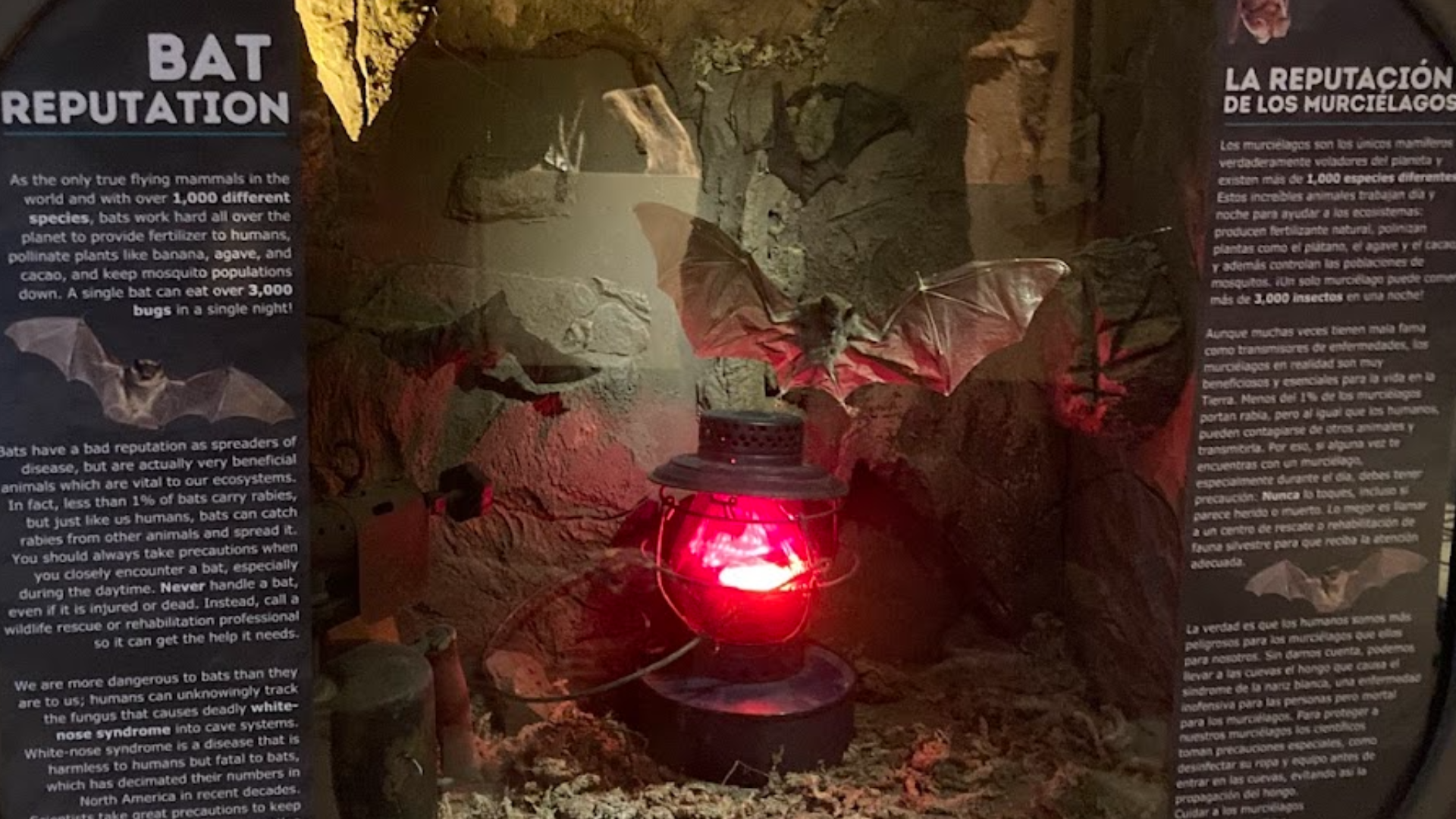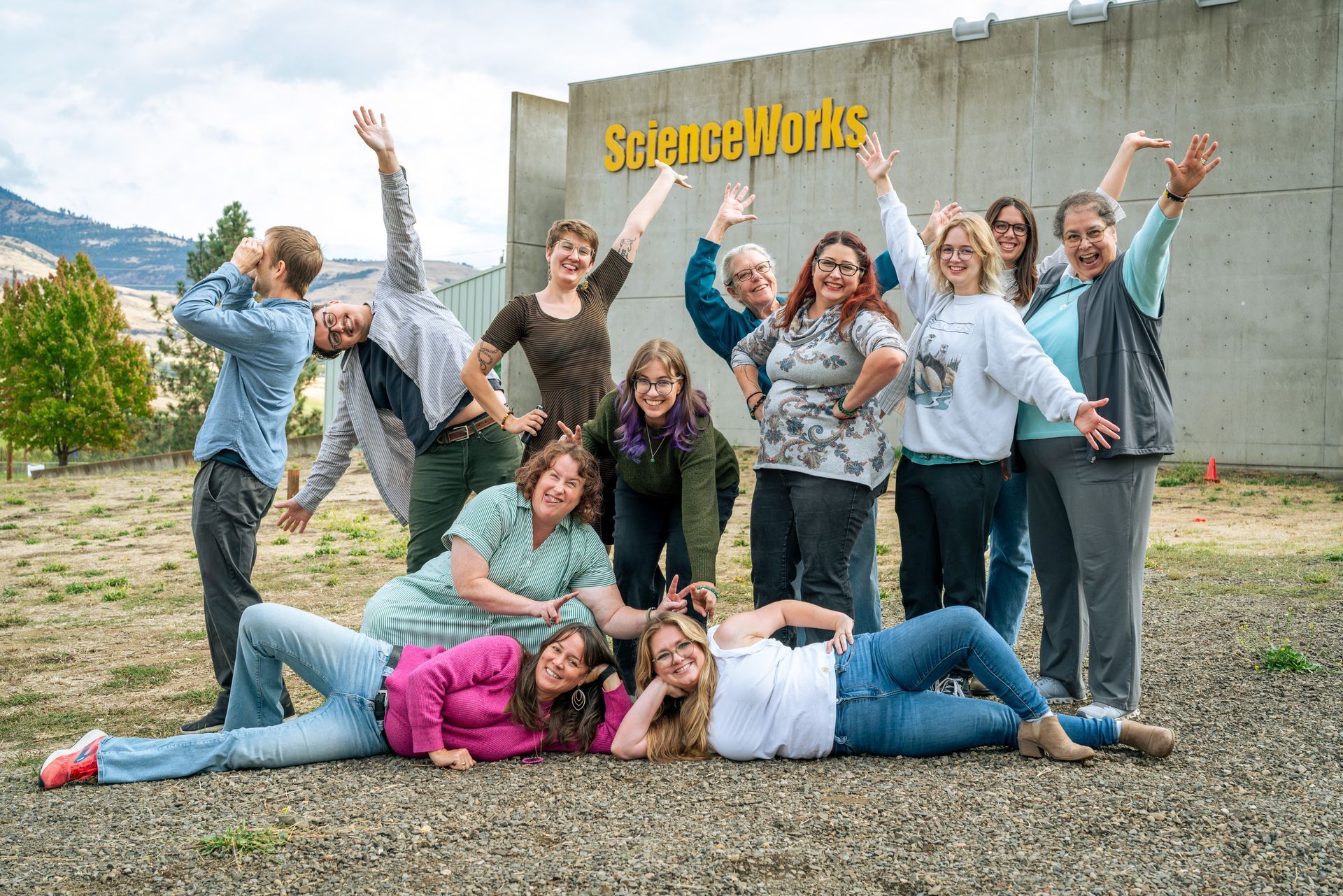Explore ScienceWorks' New Cave Exhibit
Explore ScienceWorks' New Cave Exhibit

ScienceWorks is pleased to announce that its newest exhibit, Subterranean Science: Exploring Life in the Dark is officially open! This original cave exhibit features interactive glowing mineral displays, touchable rocks, live insects, taxidermy bats, and natural history displays which immerse visitors in the subterranean world of Oregon caves.

Just like real caves, this exhibit took a long time to form (though in our case it took one year instead of several million). Thanks to a generous grant from the Brabson Family Foundation, we were able to achieve our vision through hard work, creativity, and a lot of help from our community.
Retrofitting our old and outdated Dark Science exhibit was the first part of the process. It involved demolition, electrical upgrades, and the installation of an entirely new, accessible concrete floor. Some of the exhibit cases were over twenty years old, and were warped, frayed, and in need a little persuasion to come out.

After the demolition and floor work were complete, exhibits coordinator and designer Liz began building the new habitats for our cave-dwelling insects. These enclosures need to be watertight, provide good airflow and drainage, offer lots of climbing opportunities, and be naturalistic. Liz sculpted realistic rock formations out of foam using blades and heat guns, then sealed them with water-proof concrete paint and silicone.
Reptile and insect expert Josh Jackson, of J & S Reptiles in Grants Pass generously donated his time, expertise, and equipment to outfit the habitats with live plants, state-of-the-art lighting and heating systems, and automatic misters to keep temperature and humidity levels just right for our bug friends.

The finished insect habitats are bioactive — meaning that they are home to a healthy community of isopods, springtails, and live plants that keep the tank clean and enrich the soil. Our Madagascar hissing cockroaches and blue death-feigning beetles moved in at the start of October and are all settled into their new life at ScienceWorks.

Our friends at the Crater Rock Museum in Central Point were a huge help, loaning us fluorescent minerals for the glowing portion of the exhibit. Curator Jillian Kettley generously shared some incredible specimens and connected us with the museum’s specialty UV lamp provider. Now ScienceWorks has a professional 950-watt UV lamp that really makes our minerals pop!

The Friends of the Oregon Caves and Chateau, along with the Oregon Caves National Monument and Preserve, also collaborated with us to add a Dark Sky Awareness section to the exhibit. This display features a magnificent full-wall deep space photo mural of the Orion Complex, captured by local photographer Jasman Lion Mander in Cave Junction, along with educational materials about the Monument’s status as a Dark Sky zone and ways to limit light pollution in your own neighborhood. The Friends also generously joined us at Monster Ball 2025 to share information about the new exhibit and their own preservation efforts — all while dressed as cave people!

Subterranean Science isn’t just home to live creatures and minerals, it also houses a collection of taxidermy bats loaned to us by our kind neighbors at the Clark R. Bavin National Fish & Wildlife Forensic Laboratory, and a variety of local cave insect specimens on loan from Southern Oregon University’s Insect Collection.

To showcase these specimens, our team created custom display frames that combine precision technology with handcrafted artistry. Each piece is housed in a specially designed, CNC-cut frame (CNC stands for “computer numerical control"), a process that uses computer-guided tools to cut materials with incredible accuracy. Exhibit manager and fabricator Addison Carroll designed the frames and exhibit title sign using drafting software, cut them on the CNC machine in the ScienceWorks workshop, and then meticulously sanded and hand-painted each one.

It has been a labor of love and a true community effort to create this exhibit, and we cannot wait to welcome you to ScienceWorks to experience Subterranean Science: Exploring Life in the Dark!








